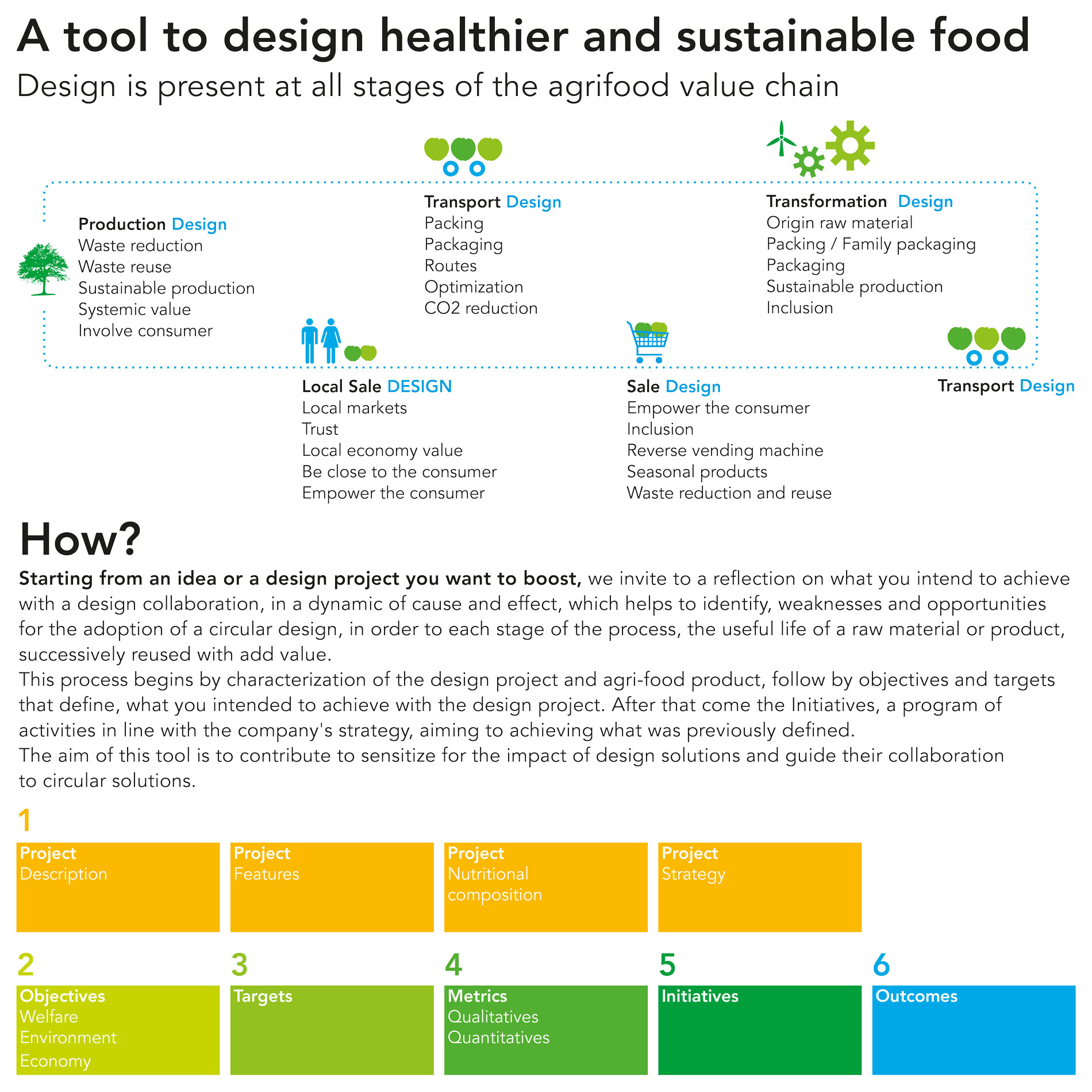A tool to design healthier and sustainable food
My research interest focus is to sensitize the agri-food business, for the contribute of design to develop circular solutions, communicate it, and add systemic value to the business.
Design is characterized by focusing on the way we use and enjoy products, by translating benefits into something that we can enjoy, a process made up of many choices, which undoubtedly always have impact on society and natural resources. Throughout the process of developing: products, packaging, labels, transport, promotional materials, among others, it is possible to optimize costs and minimize the impact on the environment, namely in the selection of shapes, raw materials, sustainable production processes, waste reuse and inspiring and empower people for healthier habits and behaviours that do not compromise the planet.
This depends on kind of integration design has in the process, if it is only for finalizing a project it could be difficult, but if it integrates from the beginning in the development a project or the conception of the strategy, allows to discover what is the soul of a business, his fingerprint that is unique. This approach gives insights and stories to develop a project and narratives to value what is done, instead of it is sold, sometimes in a intuitive way, through knowledge or tradition, whether in the way it is produced, in the way it relates and involves with the community or on the useful life of the product and the initiatives to extend it. Narratives are important and necessary, because they create trust and empathy, because they are unique and authentic and because they are easier to remember and, consequently, to associate with the experience and the product.
To manage design for a circular solutions and evaluate the investment return, we develop a tool that begins from an idea or a design project you want to boost, taking the product and its qualities as a starting point, that invite to reflect on what you want to achieve with design collaboration, in a cause-and-effect dynamic, which helps to identify strengths, weaknesses and opportunities for the adoption of a design circular. After that come the objectives and targets that intended to be achieve with the design project, follow by the initiatives, a program of activities in line with the company's strategy, aiming to achieving what was previously defined.
The aim of this tool is to contribute to sensitize for the impact of design and guide for solutions that extended the useful life of a raw material or product in new products, so that from production to acquisition, confection and storage, consumption habits tend to improve and cause the least possible impact on the environment. But also, through the process, being able to monitor the collaboration of the design and, in the end, evaluate it.
External source(s)


